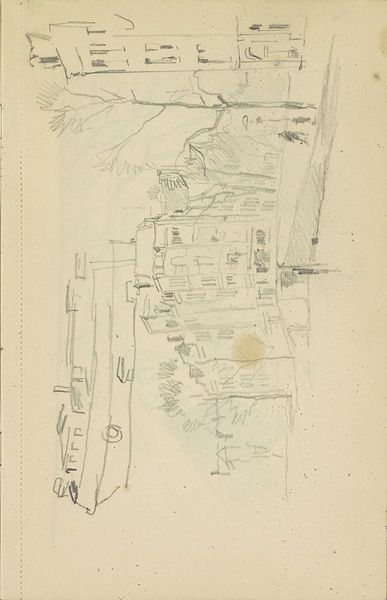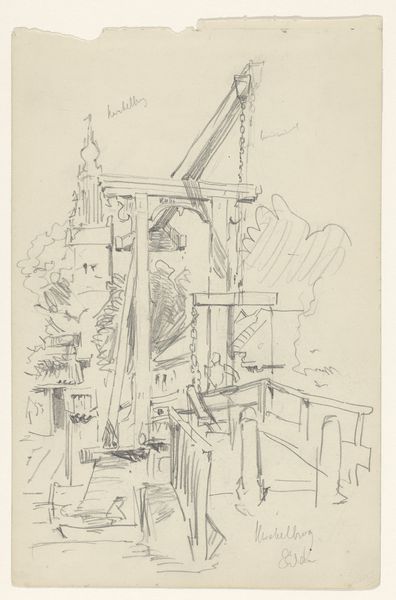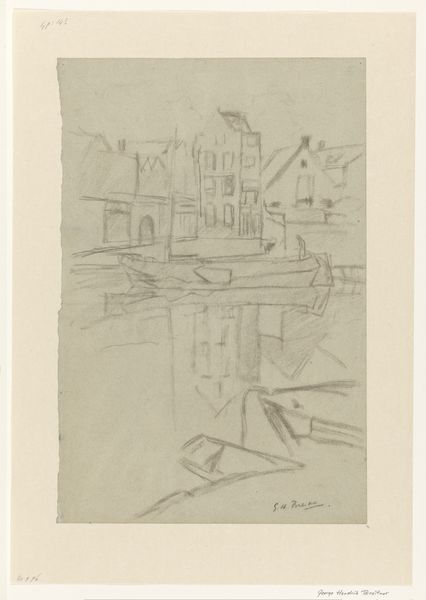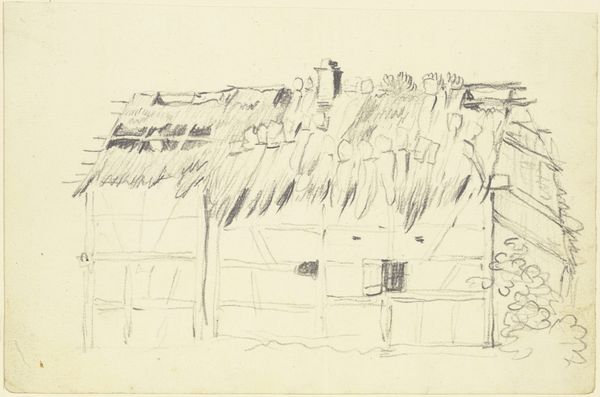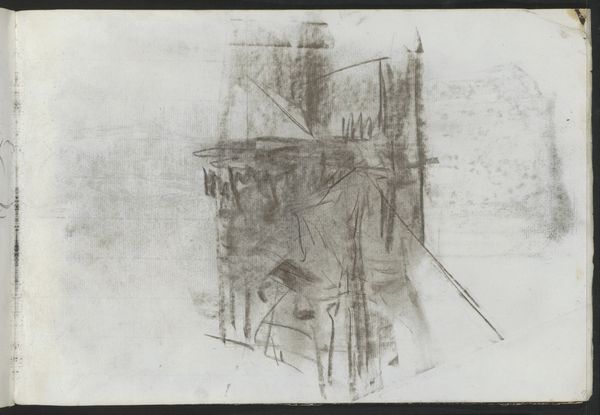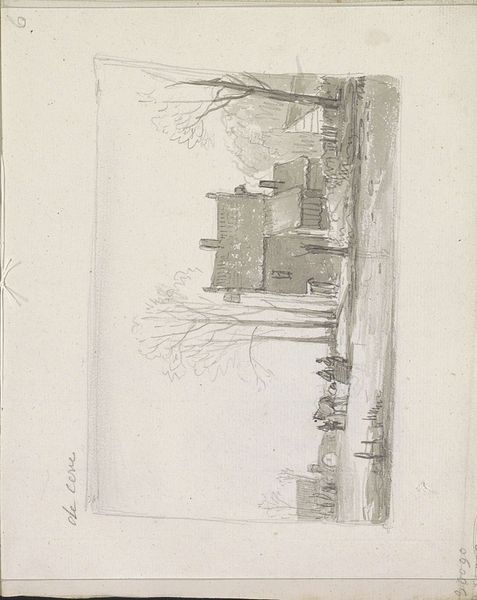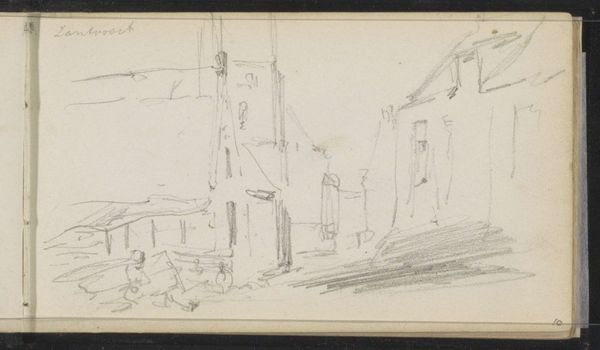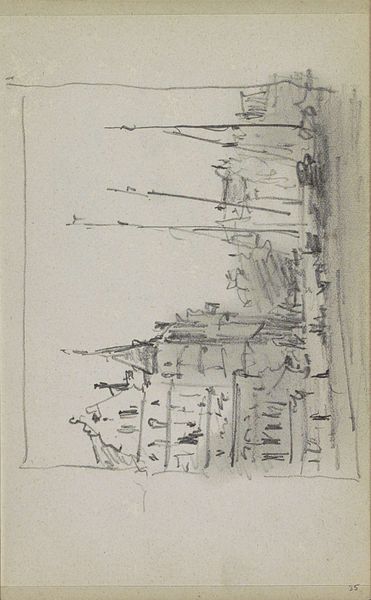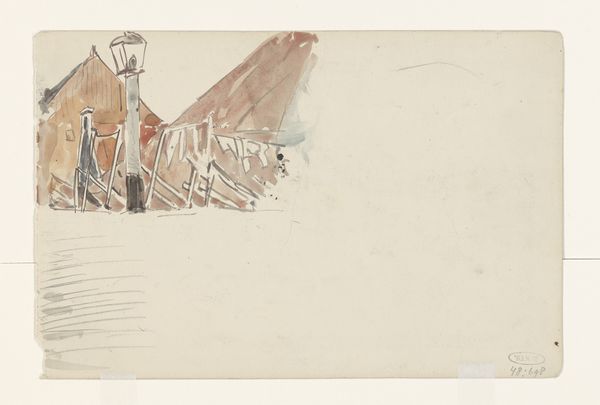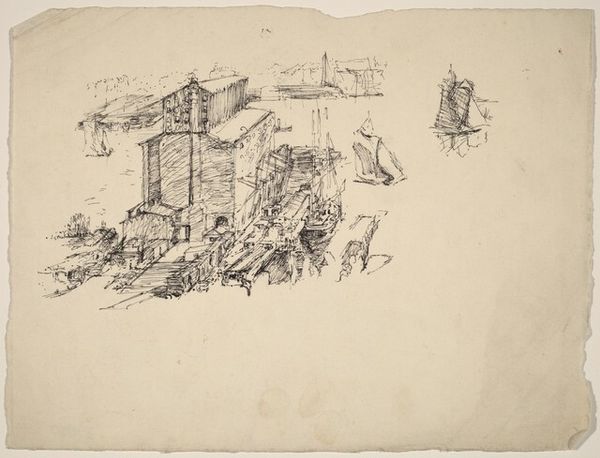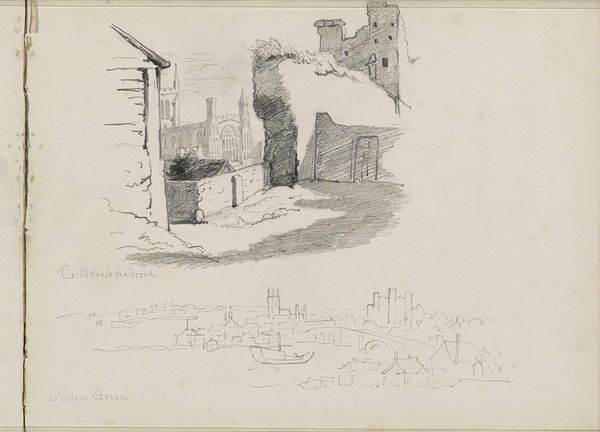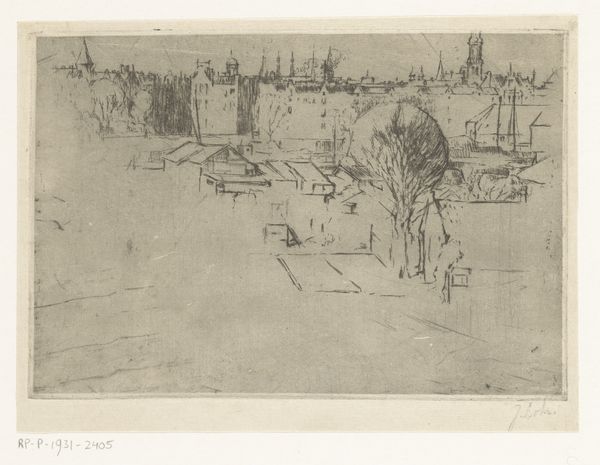
Dimensions: height 271 mm, width 333 mm
Copyright: Rijks Museum: Open Domain
Curator: Jan Hoynck van Papendrecht's "Construction on Van Eeghen Street, Behind Park Road," created in 1893, offers a glimpse into Amsterdam's urban development at the end of the 19th century. Editor: My first impression is a melancholic one, a sort of grey quiet. There’s this striking stillness despite what seems like an active construction site. The muted palette gives it a subdued feel, like a memory fading at the edges. Curator: The grey certainly dominates. Given the subject of urban development, it could be interpreted as a depiction of the relentless, often grey nature of progress. But if you look closely, watercolor as a medium adds a layer of nuance because its watery base evokes purification, change and impermanence, while hinting at cycles of life, which perfectly captures Amsterdam undergoing constant reinvention. Editor: Precisely! It reminds me of the debates around gentrification. We see "progress" as these structures emerge. It asks, for whom? The rising buildings potentially displace entire communities and disrupts historical continuities and challenges dominant narratives about what constitutes urban renewal, reflecting its profound social impact and questioning the very concept of development. Curator: Indeed. These are debates that stretch back centuries. There is so much to be decoded from this apparently straightforward depiction of construction. Note that this particular construction site seems relatively contained within the artist’s perspective – notice how the artist uses scaffolding and cranes as if staging progress, or, even the structures in progress. Editor: It highlights how industrial symbols like the cranes here gain iconographic weight to reflect ideas of modernity, progress, and societal change. When considering such artistic symbolism it seems like the artwork invites us to view those symbols with a critical awareness that can facilitate productive dialogue in this regard. Curator: This piece offers such a fascinating lens through which we can reflect on the historical forces that have shaped urban landscapes and their deeper emotional undercurrents. Editor: I agree completely. It definitely sparks necessary conversation about the ethics surrounding urban progress, a conversation with echoes resounding into the present day.
Comments
No comments
Be the first to comment and join the conversation on the ultimate creative platform.

